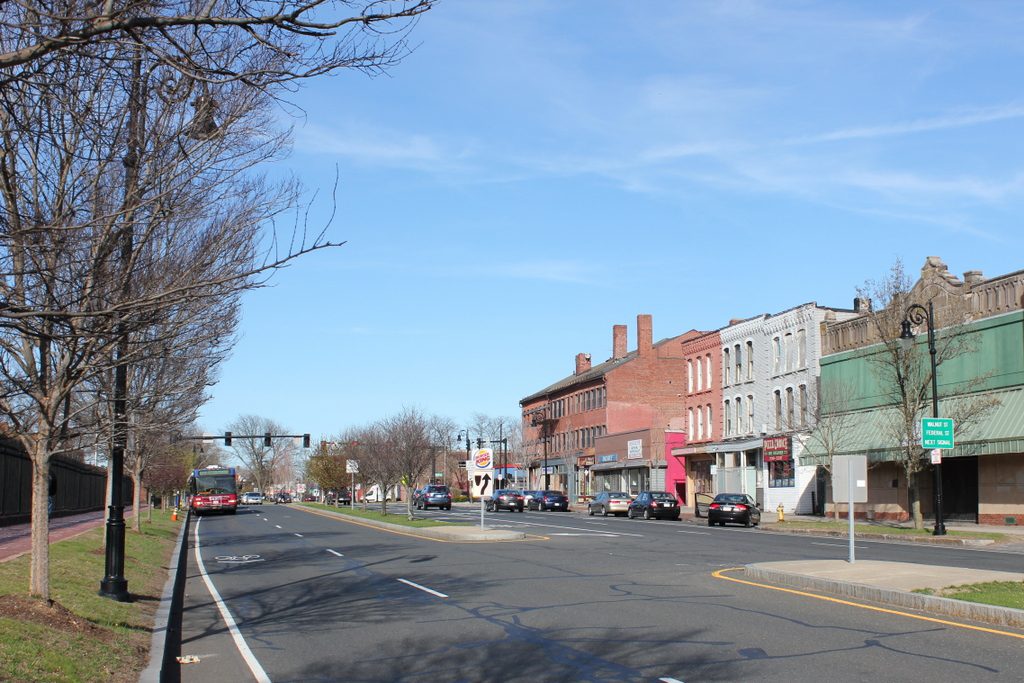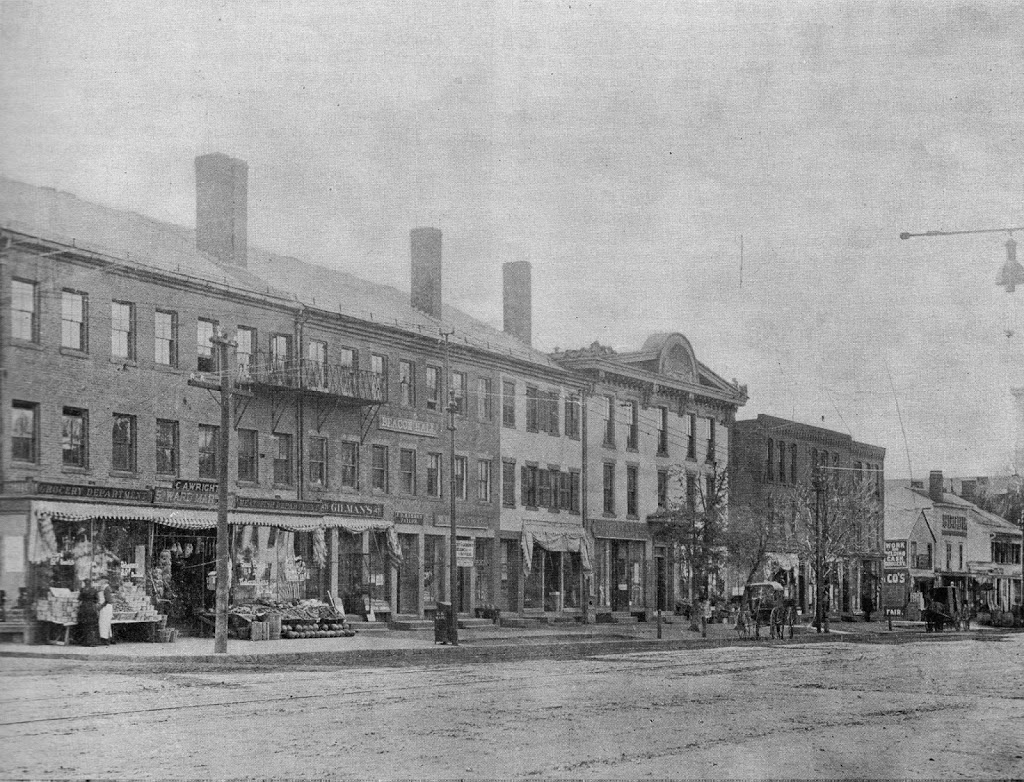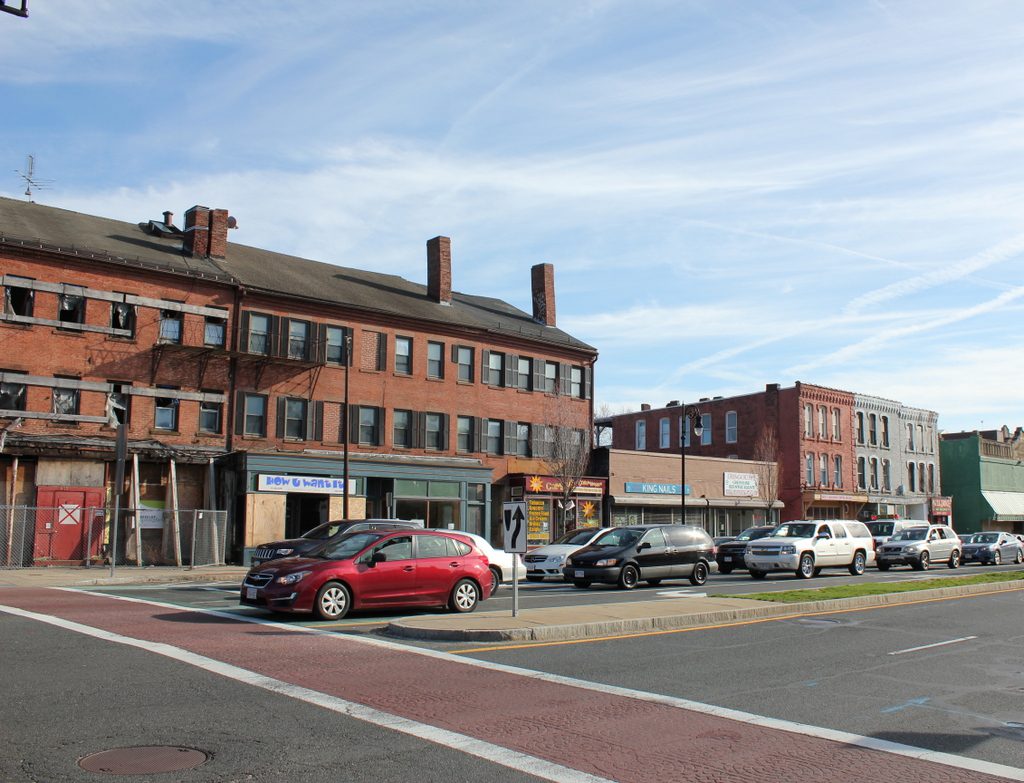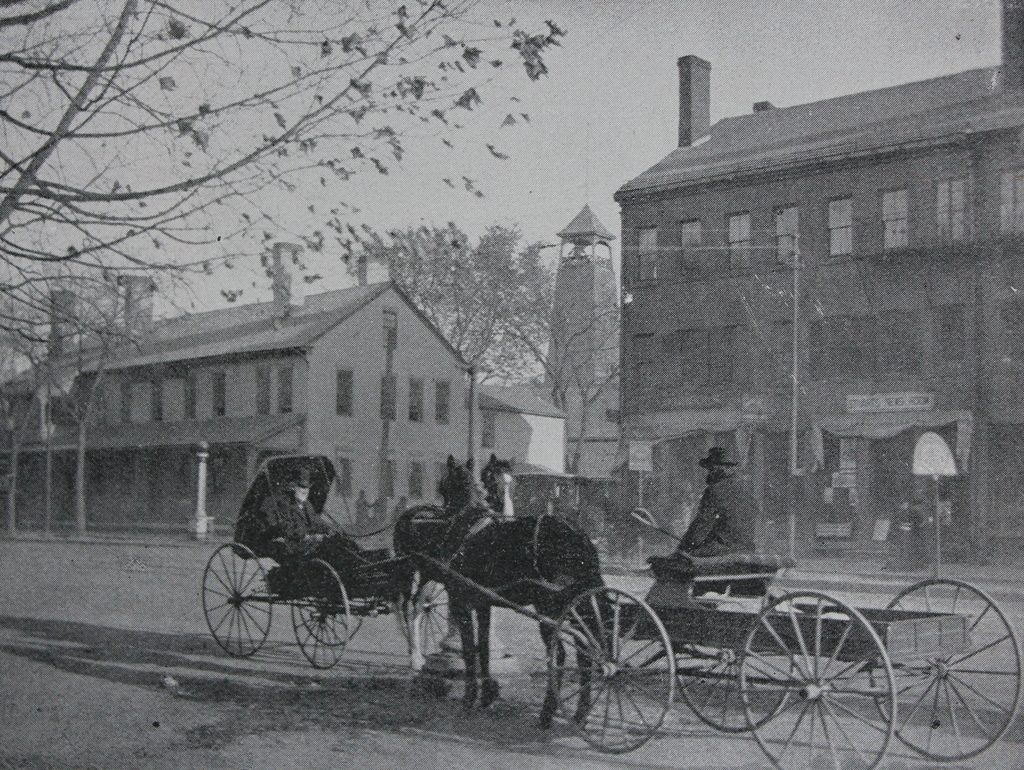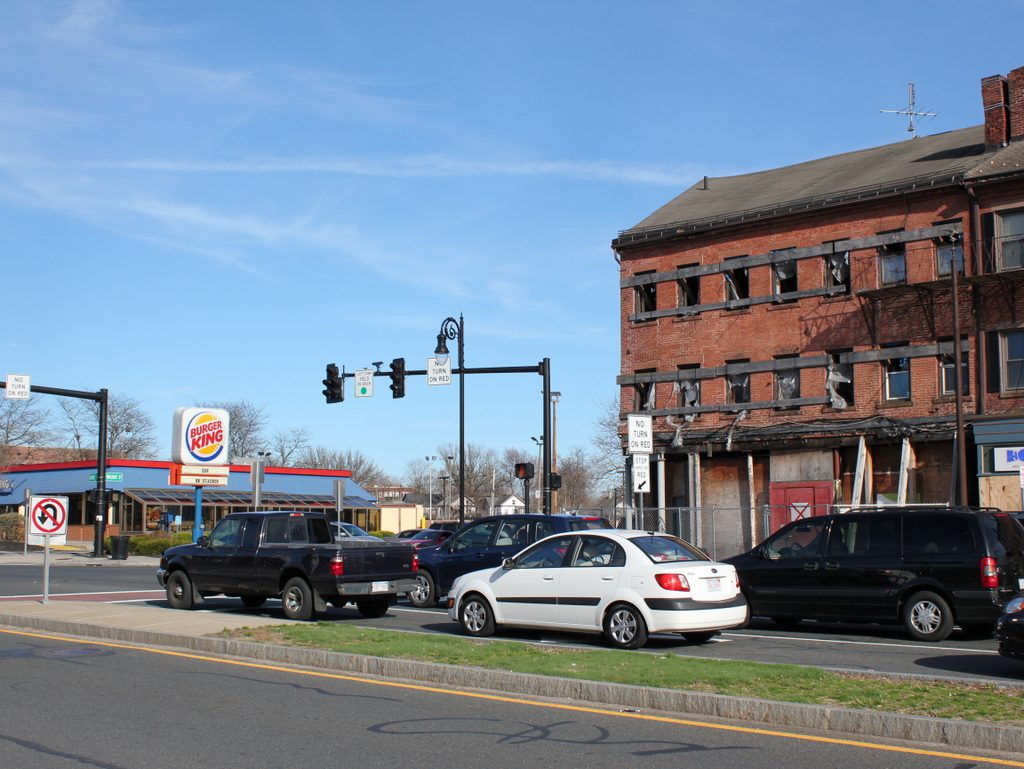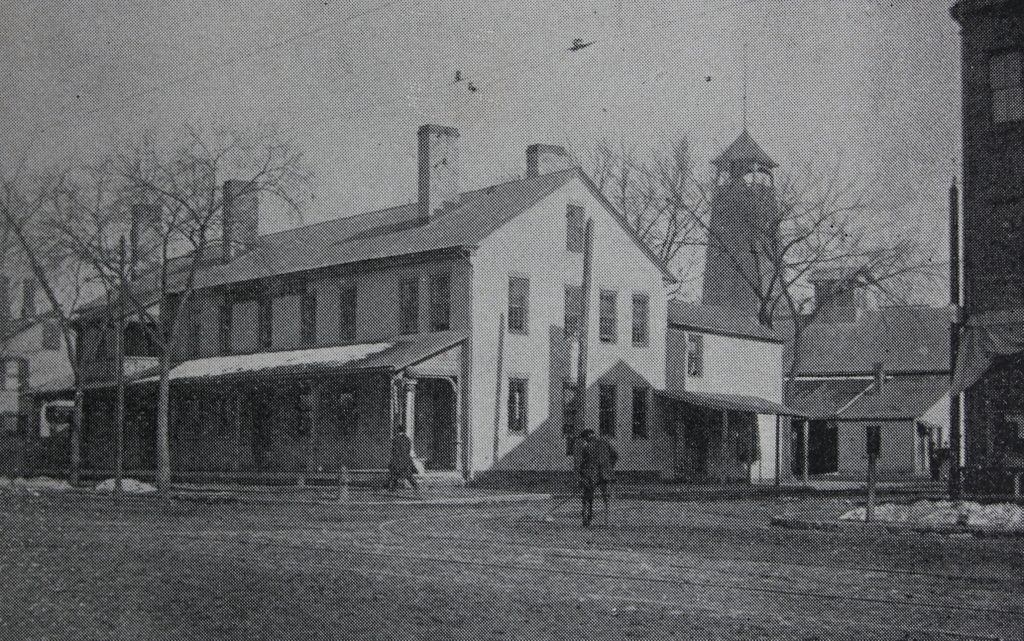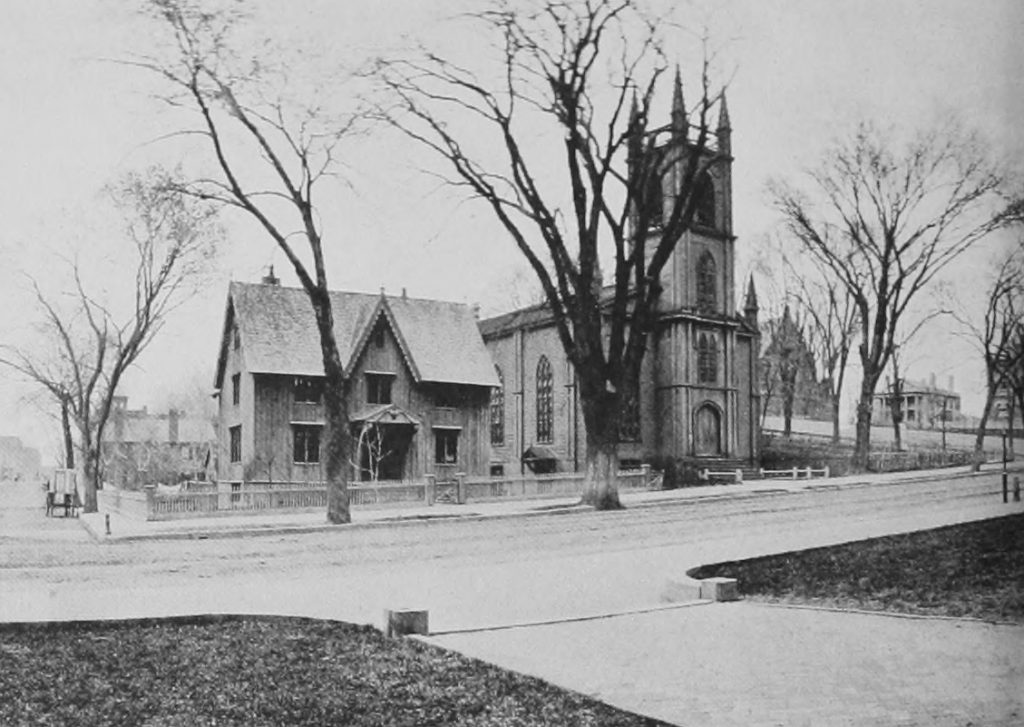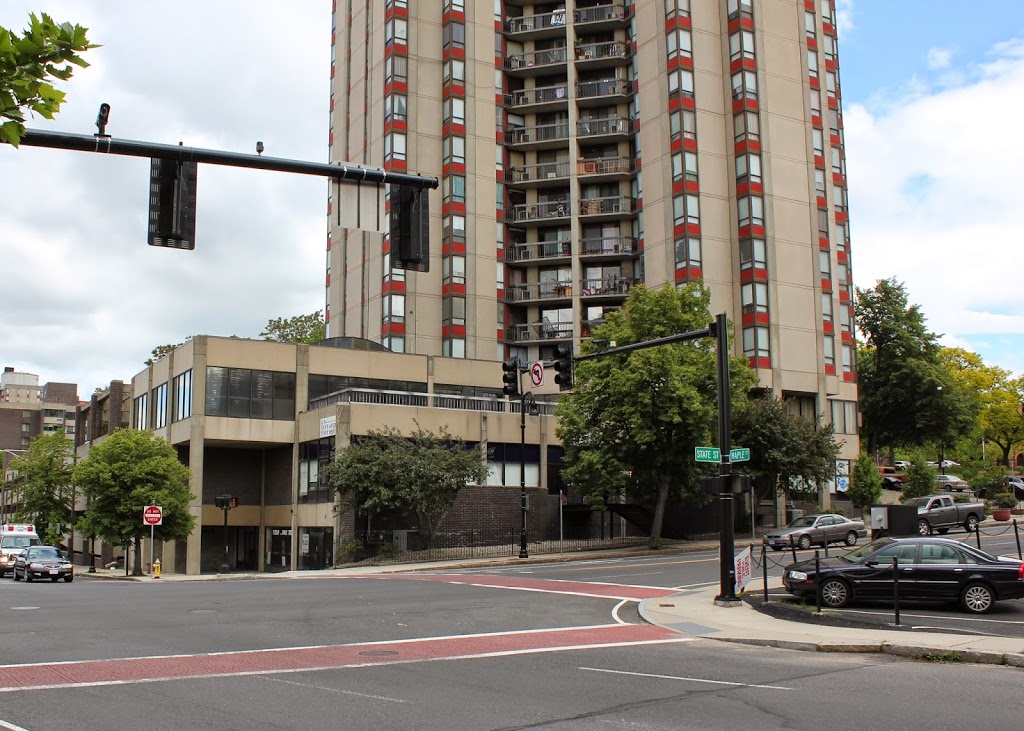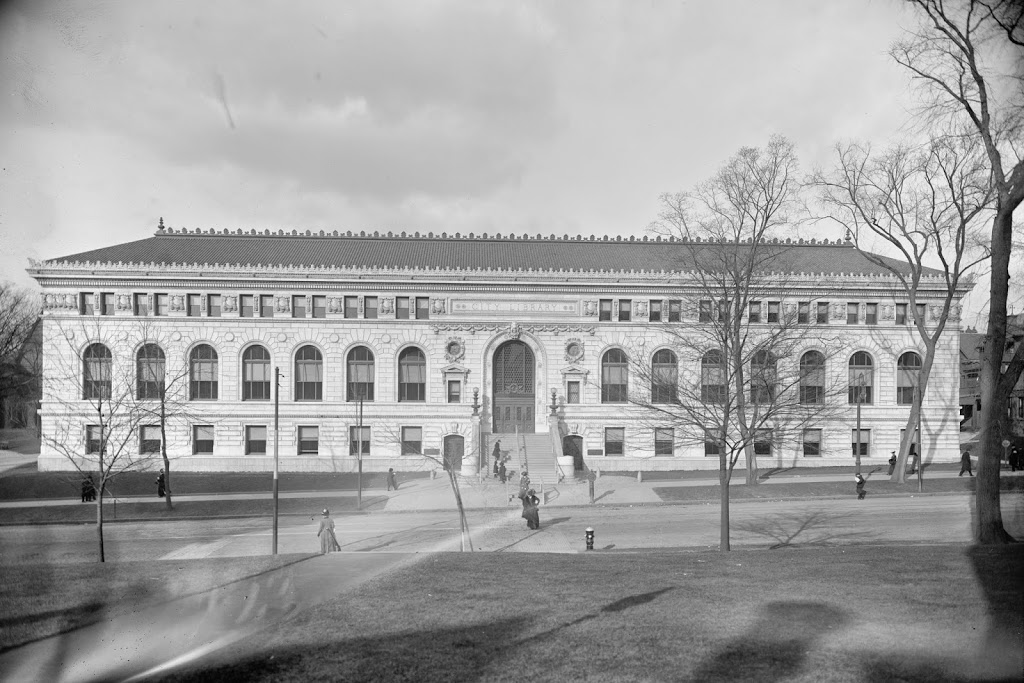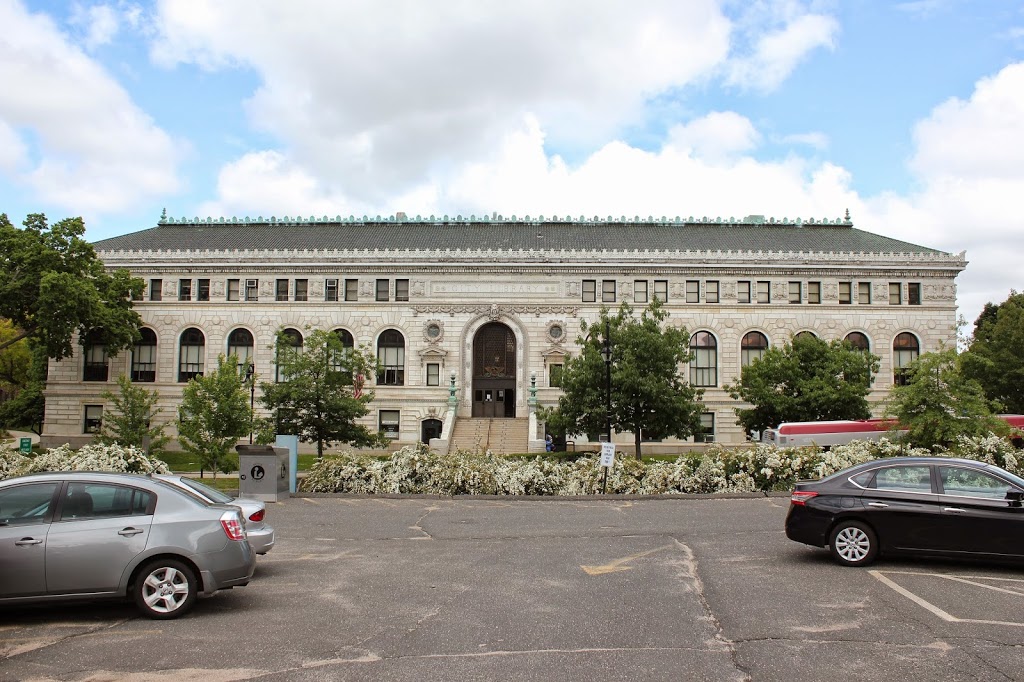The view looking east on State Street from the sidewalk along the Armory grounds, sometime in the late 1800s. Photo from Springfield: Present and Prospective (1905).
The scene in 2019:
The buildings in these photos are the same as the ones in the previous post; the only difference is that they are seen from the opposite direction. Although these two photos were taken well over 100 years apart, many of the buildings are still there, including the Gunn Block and the two adjacent buildings in the background, which date to the 1830s, and the three buildings in the center of the photo, which likely date to around the time of the Civil War. Even one of the businesses from the first photo almost made it to the present-day; the sign for William Kavanagh is barely visible on the sign above the awning on the building to the far right. Today, the building is gone, having long-since been replaced by a newer Kavanagh building, with a newer sign. However, Kavanagh Furniture closed in 2008, although it was probably the longest-lasting of all of the businesses from the first photo.


